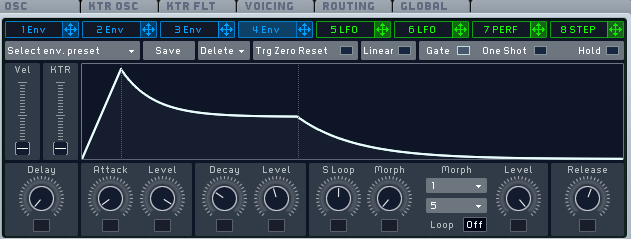Massive is a wavetable synthesizer introduced to the world by Native Instruments. It is arguably the most popular wavetable synthesizer and its definitely one of my favourites.
Due to the fact that I use it so much I thought I’d give a little run through of its features and a deeper look at the functionality of a wavetable synthesizer and how it differs from FM and Subtractive.
First of all what is wavetable synthesis?
The term wavetable identifies a very important aspect about the synthesizer type, that is that it has these things built into it called wavetables. A wavetable is essentially like a collection of samples, each sample will usually be 1 complete cycle of a wave form. These can range from simple waves like sines or squares or get really complicated like some of the waves shown below:

From Future Audio
Although the coolest part about Massive and most other wavetable synthesizers, is that not only do you have all these waveforms at your disposal but you pick two of them and you can fade between each of them which yields and almost infinite amount of combinations. Massive has some classic pairings like Sine-Triangle, along with some more out there ones like Rough-Math I and II. Here’s a list of some of the combinations available with Massive by default.
This concept is hard to grasp but the easiest way to visualise it is described in the Massive manual which can be found here:
“Think of these wavetables in two dimensions. The horizontal axis represents time, and the “recorded” waveforms run from left to right on the table just as in any sample editor: playback starts from the left, and when one complete waveform cycle has been played from left to right, the playback jumps back to the beginning at the left to loop the waveform.
Along the vertical axis, on the other hand, there are different waveforms one above another, like the tracks in a multi-track sequencer: at the bottom there is one waveform and at the top there is another one. Between them are a series of intermediate waveforms that gradually morph from the bottom waveform shape to the top.”
With that explained it’s easier to visualise what happens when you turn the W-T position dial on the Massive interface. Whats happening is the position on the wavetables vertical axis is changing so you get different degrees of wave form combination.
As you can hear in this example I sweep the W-T position dial from left to right and you can hear the Sine wave morph into a Square wave, also note that I sit in the middle for a while on the combination of both:
So now that we understand how wavetable synthesis works lets dive in and create something.
Massive has all the other elements of synthesis such as filters, modulation and noise oscillators plus it has its own built in effects which are all really nice, especially its reverb. In this sound I will try to use at least one of each of these elements, however I will try to make the wave table dial the focal point of my sound.
So I’ve been into sound effects lately so instead of trying to make an instrument I think I’ll go for something magical that could be used in a game as an effect.

To start off I’m only using 1 oscillator, I want a crystal sound so I’ve decided to use the Sine-Square wave table, as you can see I’ve left the position right in the middle so the sound begins with both waves. However as you can see by that little 6 and the green inner-most circle that I’ve added an LFO.

What I’m doing here is using an LFO to with a sharp attack to modify the wave table position on the fly so that it adds each extreme of the wave table as a sort of vibrato effect. Makes the sound interesting and really takes advantage of the wavetables.
I then went on to add two effects, a reverb and a chorus.
I made the reverb as large and dense as I felt necessary to give it a dramatic effect then I turned the wet signal down so the reverb just poked through. This allowed it to be a long tailed reverb with a relatively low level. I used the chorus effect to give the sound a little more presence as you can see I’ve kept the wet signal fairly low on this as well so that it doesn’t overwhelm the sound.
Next, I added in a little bit of noise through a Daft filter, which is essentially a low pass filter very similar to an Acid filter. These elements together just added ambience to the noise and filled it out as a sound effect element when a single tone is held.
Finally I changed the main envelope attached to the master making the attack relatively short to keep that bell chime at the beginning and let the release go fairly long to sustain that low level reverb, noise and the LFO.

The final sound turned out like this, definitely sounds like a crystal or some sort of magical hum, especially with that added noise. Might be able to use this as an instrument as well, it plays like a soft bell lead could be good for a laid back bridge or a relaxing ambient track.
So! To sum it all up, wavetable synths use wavetables and we’re all very educated on what those are by now! They’re just like sampled wave cycles and by combining two different ones at different degrees you can create some really interesting sounds, especially if you use LFO’s or modulators to sweep between two different waves.
That’s all for today, thanks for reading!



